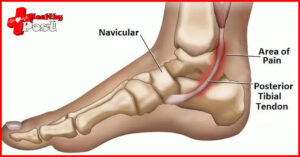
What to do if you have Knee pain, inside of your knee?
Knee pain has always been the number one pain problem that plagues runners. Different locations of knee pain have different natural causes, symptoms, treatments, and recovery. In the past, many articles on Huipao have explained in detail to runners the two common problems of anterior knee pain and lateral knee pain. Today, I will talk to runners about medial knee pain that may be caused by running.
Common causes of knee pain
1. Pain on the inside of the knee? Most likely it’s anserine tendon bursitis
Anserine tendon bursitis is the most common cause of medial knee pain. How come there are “goose feet” on a human body? Let me explain it first. The joint tendon composed of the sartorius, gracilis, and semitendinosus is a structure formed on the inside of the knee joint downwards and ends at the tibia. Because its shape resembles the foot of the anserine, it is called the “foot anserine tendon.”

Muscle contractions pull on tendons, which are attached to bones, thus pulling on bones to create movement. In order to reduce excessive friction between the tendon and the bone surface during the process of pulling the bone, a specific soft tissue – the pedis anserine tendon bursa – is formed between the anserine tendon and the tibia. Thickening of the bursal wall and excessive production of bursal fluid, resulting in localized swelling and pain, is called pes anserine tendon bursitis.

2. Causes
The anserine tendon bursa can prevent excessive friction between tendons and bones, but there are pros and cons in everything. Repeated knee joint flexion and extension exercises such as running, because of the anserine tendon bursa, the tendons will not rub violently with the underlying bones. . However, the tendon may rub excessively with the anserine tendon bursa below, which means that the tendon may cause one thing at the expense of the other, resulting in anserine tendon bursitis. In addition, the local tendons in the pes anserine tendon bursa area are intercalated and arranged closely. When these tendons are inconsistently coordinate, chronic strain may easily occur, aggravating pes anserine tendon bursitis.
Generally speaking, pes anserine tendon bursitis is also an ” over-use injury “. The cause of its occurrence is highly related to high frequency of flexion and extension of the knee joint and adduction and internal rotation of the calf. Therefore, pes anserine tendon bursitis Not uncommon among runners.
3. Main symptoms of medial knee pain
1. Pain on the front and medial side of the knee joint, which worsens after exercise and decreases after rest;
2. Pain, tenderness, and swelling 2-5 cm below the joint line on the inner side of the knee joint;
3. Pain worsens when flexing and extending the knee joint and going up and down stairs (especially when going up stairs)
4. Treatment and rehabilitation methods for medial knee pain
1. Rest
For strain injuries, rest has always been the only way to relieve symptoms. When you feel pain on the inside of your knee while running, please stop immediately. At the same time, it is also necessary to properly control the amount of running. A large number of scientific studies have reached the unanimous conclusion that ordinary people should not run more than 40 miles (approximately 64 kilometers) a week. If the amount of running exceeds this, the probability of sports strain increases significantly.
2. Treatment
1) For pain on the inner side of the knee that occurs immediately after exercise, you can choose to apply ice to relieve it.
2) Apply non-steroidal anti-inflammatory drugs, such as Voltaren, Indomethacin, etc. (It is recommended to use topical drugs instead of oral drugs).
3) For more severe cases (obvious swelling and unbearable pain), it is recommended to seek medical treatment as soon as possible and follow the doctor’s instructions for physical therapy.
4) For non-acute medial knee pain, you can go to the hospital’s physical therapy department or rehabilitation department for physical therapy.

In addition, muscle tape can also be used appropriately to enhance proprioception on the inner side of the knee.
3. Stretching
When the muscles around the knee joint are too tight, it will cause increased friction between the anserine tendon and the anserine tendon bursa. Therefore, tight muscles and insufficient flexibility are also important causes of anserine tendon bursitis, so after running, aim at the knee joint The muscles around the joints need to be fully stretch.
Calf hamstring stretch



4.Training
Stretching alone is not enough. Strengthening the muscle strength around the knee joint (front and back of the thigh, back of the calf) and strengthening the stability of the knee joint are the fundamental solutions. How to improve? Here are some simple, effective and commonly used actions.
5. Summary
Anserine pad bursitis is pain on the inside of the knee cause by overuse. Commonly used treatment methods include rest, ice application, applying anti-inflammatory drugs, etc. For more severe cases, it is recommend to seek medical treatment and receive physical therapy. After the inflammation is resolve, the pain will be significantly reduce or even disappeared; improving the quality of the muscles around the knee joint through stretching and strength training is a A fundamental way to treat anserine foot pad bursitis. Runners who are suffering from inner knee pain, do you know how to deal with it?


6 thoughts on “What to do if you have Knee pain, inside of your knee?”